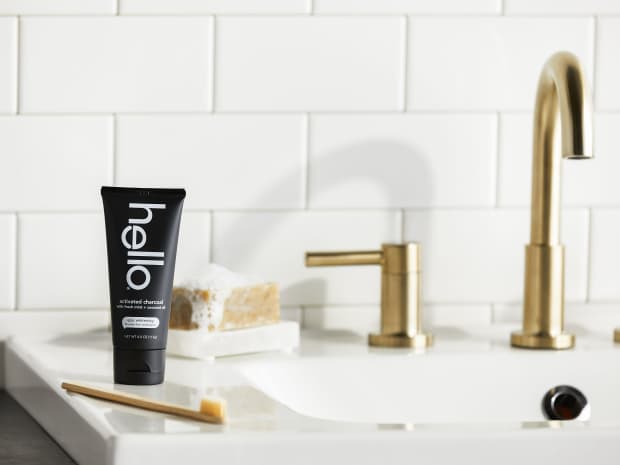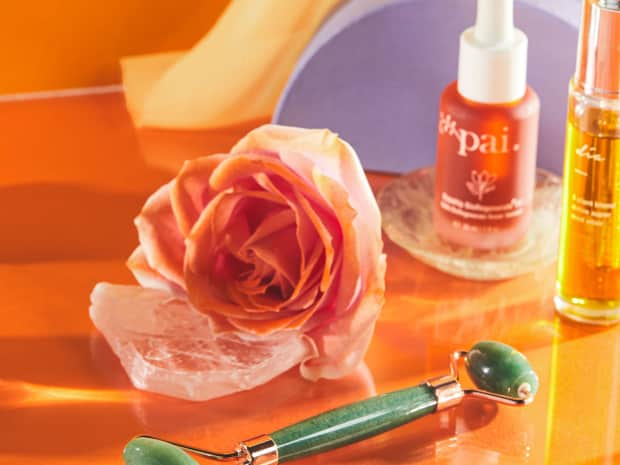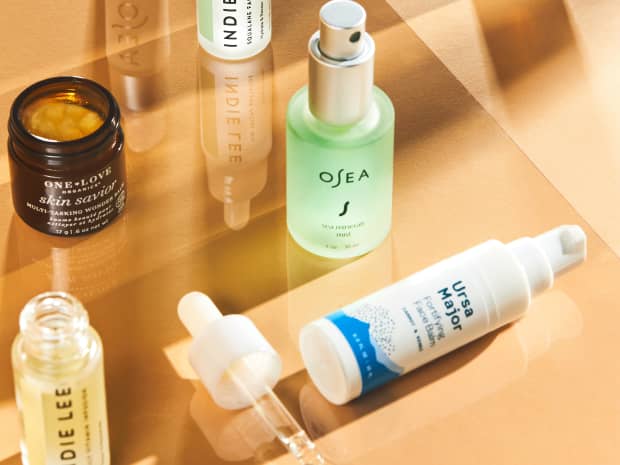
What's the Best Natural Lip Balm? Benefits, How to Use & Our Favorites
A look at what ingredients comprise natural lip balm, whether they’re effective, and which natural lip balms are the best.
Read More

Last Updated: May 5, 2022
Flossing is central to good dental health, but conventional floss is full of ingredients that aren’t great for the environment. Here’s the lowdown on floss and what to look for when you’re ready to green up your oral care game.
What’s the weirdest thing you’ve ever flossed with? In a survey by the American Dental Association, 61 percent of respondents admitted to flossing with their fingernails — here’s hoping they weren’t already clipped — and around 14 percent reported using safety pins. Most horrifying of all, seven percent said they have used strands of hair to remove food from their teeth.
Interestingly enough, all of these items are better than conventional dental floss if you’re looking to reduce the environmental impact of your hygiene and beauty routines. Luckily for all of us, there are some really great flosses on the market that are environmentally friendly and way less hazardous to your health than a safety pin.
Your average conventional dental floss is an eco-nightmare. It’s made of wax-coated nylon and sold in a cute little plastic container. Sounds pretty harmless, right? The sinister reality is that nylon, dental wax, and plastic are petroleum-derived products, which means they’re made from a non-sustainable resource, are harmful to your health and the environment, and — you guessed it — they take a very long time to biodegrade.

Under ideal conditions, nylon dental lace will take about 80 years to decompose. As for those tidy little plastic containers? They can take over 500 years to biodegrade — some estimates even put that number as high as 1000 years. What’s more, those ‘ideal conditions’ aren’t usually met.
Most floss will end up in the landfill, where it’ll be covered with soil, depriving it of the oxygen it needs to decompose. The floss that ends up in the environment will likely find its way to the ocean and into the bellies of aquatic critters, where it’ll cause serious health problems.
Want to go zero-waste but don’t know how? We got you! Read our beginner’s guide to going zero-waste for helpful tips and handy tricks.
Water picking is less abrasive than flossing and can be beneficial for people with issues that make flossing difficult, like dental implants, braces, crowns, or sensitive gums. Water piks — also called oral irrigators — work by shooting out a thin stream of pressurized water to reach between your teeth and carry away impurities.
A downside to this is that you have to stand directly over the sink while picking, or water will dribble over your chin, down your shirt, and onto your bathroom floor, and that’s the last thing you need first thing in the a.m. Water picking can be a smart addition to your oral hygiene routine, but it’s generally accepted that there’s no substitute for traditional flossing.

Water picking is a great option to reduce the waste associated with the packaging of conventional flosses. Water piks are similar to electric toothbrushes in that they don’t require refills, and once you buy one, you won’t need to replace it for years. They’re also energy efficient, using only a minimal amount of electricity — and there are even hydropower models that hook up directly to your faucet.
Ready to go green? Read our guide on reducing single-use plastics and find reusable alternatives.

If you’d rather clean a toilet than floss, you’re not alone. And if you’re one of the 44 percent of Americans who aren’t exactly forthright about your flossing habits when you’re sitting in the chair, your dentist can see through your lies and will remind you that flossing is an integral step in your tooth-care routine. It removes food particles and tartar buildup between your teeth, and regular flossing fights against cavities, bad breath, and gum disease.
Another, more surprising benefit of flossing is that it removes bacteria that would otherwise accumulate in your mouth, possibly affecting blood glucose levels and causing problems for those with diabetes.
The American Dental Association says people should floss twice a day — although three times would be ideal. But if you can only manage one floss session per 24 hour period, it’ll do wonders for your oral health and your dentist will thank you.
You’re not the only one who could benefit from regular oral care. Learn how to clean your doggo’s teeth — naturally!
Eco-friendly floss means a few different things. Individual flossing picks have much shorter strings, so they don’t cause the same environmental problems as longer strings of floss. But they do require more materials to make, so look for picks that are made from plant-based materials, recycled materials, or which are recyclable. While silk floss isn’t vegan, it’s friendlier to the environment than nylon.
Whether you choose floss or picks, make sure the string isn’t coated with waxes that contain perfluorinated chemicals, or PFCs, which are petrochemicals associated with a range of health problems. Instead, look for floss coated with beeswax or plant-based Candelilla wax.

A look at what ingredients comprise natural lip balm, whether they’re effective, and which natural lip balms are the best.

Learn about the benefits of natural eye creams for the most delicate area on your face — and see 9 top eye creams loved by loyal users.

Learn how toners have evolved into a key part of any skincare regimen, and why these 5 best natural toners are your secret step to healthy skin.

Discover the harmful ingredients in conventional mascaras, why natural mascaras are better, and our favorite products.